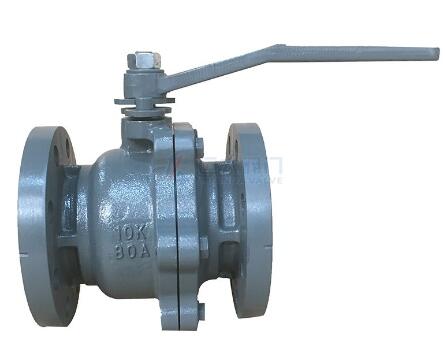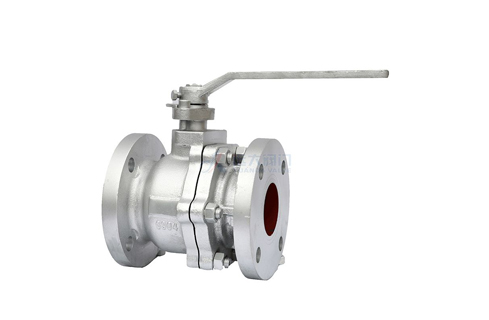Ball valves have a long service life and a maintenance-free period. They must depend on several factors: the normal working conditions, suitable temperature-pressure ratios, and reasonable corrosion data.
1. When the ball valve is in the closed state, the pressure fluid is also in the valve body.
2. Before repairing, please clear the pipeline pressure and make the valve open.
3. Please disconnect the power and air source before repairing.
4. Before maintenance, separate the actuator from the base.
5. Before disassembly, please remove the pressure of the upstream and downstream lines of the ball valve.
6. When disassembling and reorganizing, prevent damage to the parts, especially the sealing surface of non-metal parts, and use special tools to take out the o-ring.
7. When installing the flanged ball valve, the bolts on the flange must be symmetrical and then tighten gradually.
8. Ball valves are available in different materials, such as cast steel ball valves or stainless steel ball valves. The tilting agent should be compatible with the rubber parts, plastic parts, metal parts, and working medium (such as gas) of the ball valve. When the working fluid is gas and gasoline (GB484-89) can be used to clean metal parts, non-metal parts can be cleaned with pure water or gasoline.
9. After cleaning, the cleaning gent evaporates, and the ball valve can be assembled, but it cannot be stored for a long time, otherwise it will rust or become dirty.
10. Before assembling new parts, cleaning is also necessary.
Maintenance of marine ball valves
Ball valves are the type most often found on boats compared to other types such as gate valves and butterfly valves. They are also known as seacocks when they are mounted near a hull opening to either admit water from or expel water to outside the hull. They’re called ball valves because they use a solid ball with a hole through its middle to control the flow. The ball rotates with the handle to align the hole with the inlet and outlet to allow flow through the valve. Turned 90 degrees, the inlet and outlet are blocked and prevent flow. They are best used as shutoff valves because they only need a quarter turn to operate and because the position of the handle conveniently indicates the state of the valve. When the handle is parallel to the flow direction, the valve is open, when perpendicular, it is closed.
Ball valves are not very high maintenance parts. Other than worn O rings that seal the ball inside the valve body, keeping the valve clean and free-turning with a little lubrication is all it needs. It’s when a valve looses its lubrication and debris or corrosion builds up that it can become hard to turn. If you apply too much force to a plastic valve, the handle can break off leaving the valve inoperable and you must repair or replace it.
Ball Valve
Follow these steps to maintain a ball valve:
1. If practical, remove the valve from the boat so you can inspect it and more easily work on it.
2. Clamp one end of the valve firmly in a vise but not so tightly that you deform or crack the valve.
3. With a large wrench, unscrew the other end.
4. Use water to flush out any sand and dirt from both parts.
The particular valve shown in this post was on the galley drain hose that connects to the cockpit scupper drains above the through-hull fitting on Summer Dance. The valve is angled downward slightly away from its outlet and so acts like a sediment trap for the cockpit drains. Normally, valves like this should at least be angled toward the through-hull so that they don’t trap debris. Unfortunately, the drain funnel that feeds into this valve is too low for that. In situations like this, clean the valve more often than normal to minimize the scoring shown below.
5. Turn the valve handle to the open position, remove the screw that attaches the handle to the valve, and pull the handle straight off.
6. Reach inside the valve body with one finger, stick it in the ball hole to grip the ball, and rotate the ball back and forth until you can pull it out. It should be tight but come out with enough persuasion. The hardest part is getting the handle stem out of its hole.
7. Clean all the parts thoroughly with soap and water. Inspect the O rings for wear and replace as necessary. If the ball and valve body are excessively scored or worn to the point that the valve leaks too much when closed, replace the entire valve.
8. Apply a good quality silicone or Teflon marine lubricant to the O rings and wear surfaces.
9. Reassemble the valve in the reverse order that you disassembled it. Reinstall the small O ring between the ball and handle after you reinstall the ball or it could get pinched in the valve body and prevent proper fit of the other parts. Be sure it seats fully before you reinstall the handle.
10. Reinstall the valve in the boat. Apply Teflon tape to any threads and check for leaks and proper operation.
Repeat this job every couple of years depending on how often you sail and how often you use the valve. At a minimum, work all valves annually to prevent them from sticking. We are ball valve suppliers. Please feel free to contact us if you are interested in our products.



没有评论:
发表评论